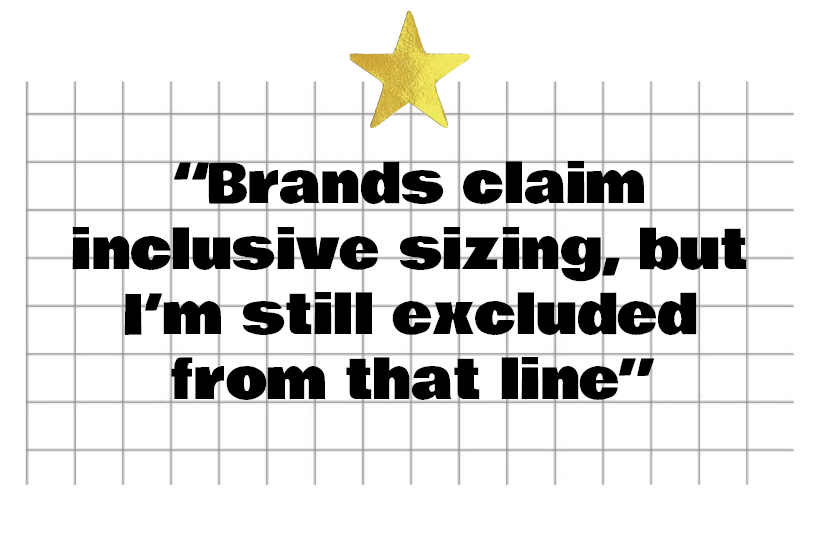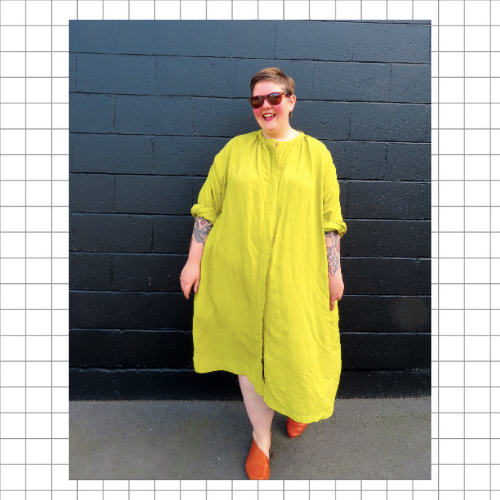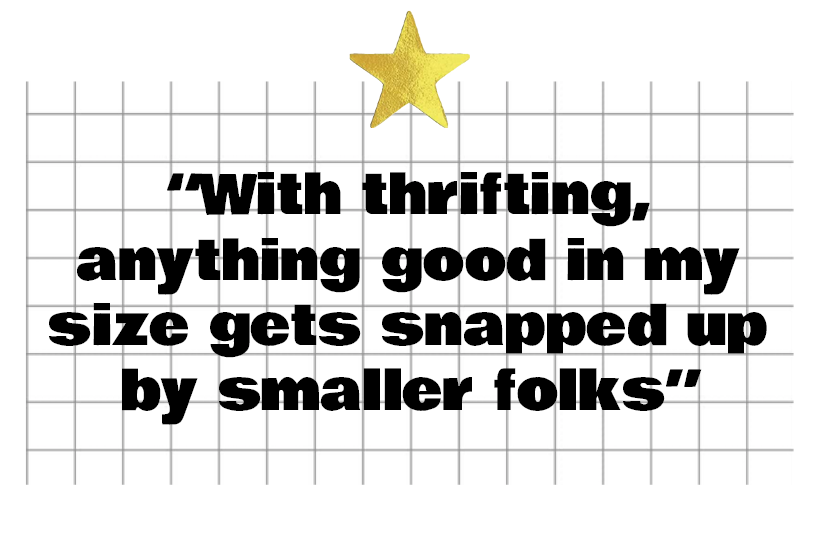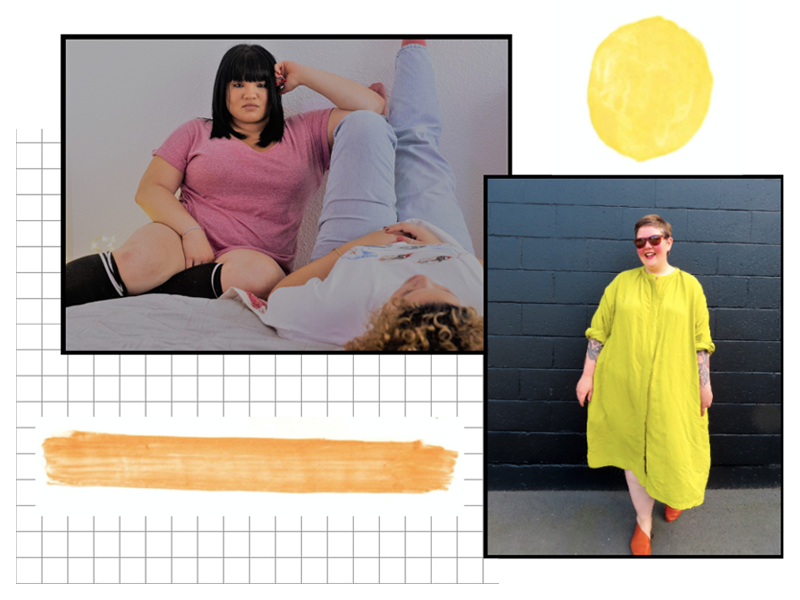Body positivity is one of the biggest issues in fashion right now. So it makes sense that fashion brands would do their best to tackle the lack of representation for different bodies. However, we are all aware, fashion rarely accommodates people of different sizes. We’ll be looking at the inadequacies of representation in fashion, joined by Jess from the plus-size sewing brand, Muna and Broad.
Many fast fashion outlets will make an effort to display diverse models in their promotional material. For example, Weekday recently featured a plus-size model showing off their clothes on their Instagram. But when you’re actually searching through their sites, there’s little diversity in the models unless you’re looking at the ‘plus’ or ‘big and tall’ sections. No matter what fit the clothes are, the bodies all seem uniform.
There is also the issue of what the fashion industry even views as ‘plus-sized.’ For women, this mostly seems to refer to having a few curves, except for the stomach which remains flat. In the UK, the average woman wears a size 16, but many consider plus-size to be any size above 14. This means that fashion brands must shift their catalogues to accommodate the realistic sizes of their consumers, rather than treating ‘average’ as ‘other.’ In 2019, Zara attracted controversy by hiring Dutch supermodel, Jill Kortleve to be their first “plus-size” model, despite her being smaller than the UK average.

As long as fast fashion outlets continue to dominate the market, their choices in marketing and representation matter greatly. Alternatives mainly lie in vintage shops or smaller brands. But while vintage is meant to be an affordable, sustainable alternative to fast fashion, it has recently garnered the stigma of being appropriated as a cool aesthetic for the skinny, white, aspiring influencer types.
But what’s to be done about this? Outside of online outlets like Depop, vintage clothing is largely distributed through smaller independent stores or charity shops, meaning there is no centralised, corporate-funded initiative for representation. Likewise, smaller sustainable brands may not have the resources for these PR pushes.
We reached out to Jess of Muna and Broad, a brand that makes sewing patterns for plus-size bodies. Their sizes range between 40-64” at the bust and 41.5-71.5” at the hips – that’s UK size 26 and up – and customers can contact them for adjustments if they are not included in these sizes.
Jess describes the lack of consideration towards larger bodies in fashion, which led her to start sewing her own clothes.
Jess’s story

“I was looking for natural fibre clothes that weren’t super femme, and they weren’t available in my size for any amount of money. There should be options available for fat folks who would like to be more sustainable, and smaller and more nimble businesses can really push the bar on being fat-size-inclusive.
“I see a lot of brands claiming inclusive sizing, but for the most part, I’m still excluded from that apparently inclusive line. Even companies that do include me, will often only show their ranges on thin folks, which means you have absolutely no idea whether they’ve done a good job of accommodating larger bodies when you purchase the garment. So many companies post about how ‘all bodies are good bodies’ but still exclude bodies over a size 20. Businesses have rushed to get on board with ‘body positivity’ in the same way that diet companies have rushed to commodify ‘wellness’ but they’re really just repackaging diet culture.

“In my student days, I never had much success with ‘thrifting’ because there are limited options that are available in my size, anything that’s good seems to get snapped up by folks who are smaller than me – either for [upcycling] or wearing in an oversized style. I don’t thrift much these days because it feels pretty classist of me to be in a store taking away clothes that some folks might need because I’m ‘hunting for a bargain’ or something to refashion. It’s hard enough to find clothes when you’re fat, and I don’t want to be responsible for making it more difficult for fat folks with budget constraints to clothe their bodies.”
There’s also the issue of the lack of representation for disabled people in fashion. For many people with disabilities, what have long been the ideal body types are simply unattainable. Fashion is a vital tool for expression and it’s therefore important that that tool be as accessible as possible. Some brands have made an effort to be more inclusive, ASOS recently featured an earring model with a cochlear implant and in 2018 they worked with Paralympian, Chloe Ball-Hopkins to design a waterproof jumpsuit with wheelchair users in mind, which Ball-Hopkins also modelled on their site. However, there is still a clear gap in visibility and ultimately which bodies are deemed acceptable and attractive to consumers.
So it seems this isn’t just an issue with fast fashion but with broader attitudes across the fashion industry and culture in general. As plus-size people become a more vocal group of consumers, the fashion industry must make a greater effort to provide clothes for all bodies.
Check out our piece on deceptive sizing in fashion catalogues

